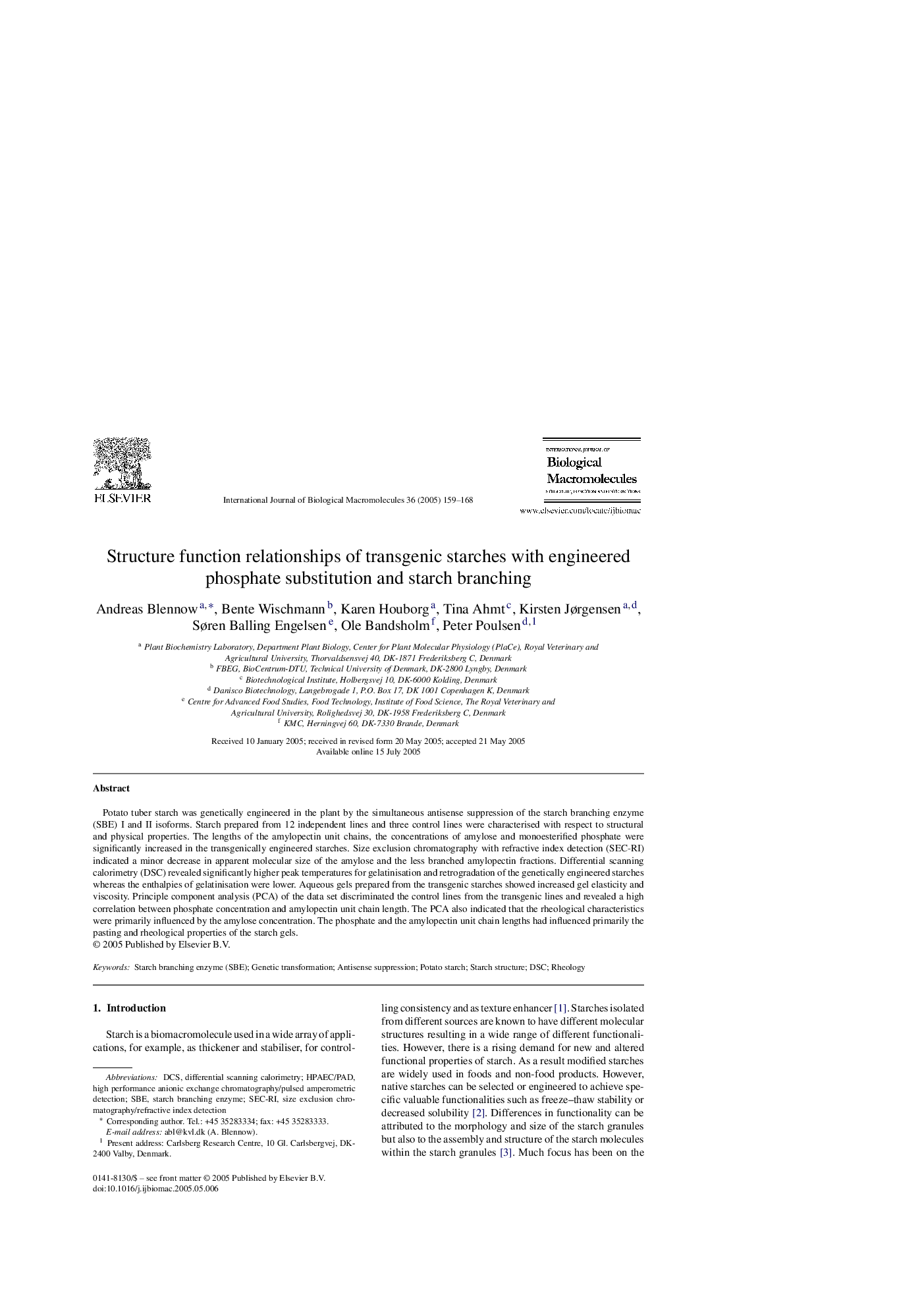| Article ID | Journal | Published Year | Pages | File Type |
|---|---|---|---|---|
| 9890888 | International Journal of Biological Macromolecules | 2005 | 10 Pages |
Abstract
Potato tuber starch was genetically engineered in the plant by the simultaneous antisense suppression of the starch branching enzyme (SBE) I and II isoforms. Starch prepared from 12 independent lines and three control lines were characterised with respect to structural and physical properties. The lengths of the amylopectin unit chains, the concentrations of amylose and monoesterified phosphate were significantly increased in the transgenically engineered starches. Size exclusion chromatography with refractive index detection (SEC-RI) indicated a minor decrease in apparent molecular size of the amylose and the less branched amylopectin fractions. Differential scanning calorimetry (DSC) revealed significantly higher peak temperatures for gelatinisation and retrogradation of the genetically engineered starches whereas the enthalpies of gelatinisation were lower. Aqueous gels prepared from the transgenic starches showed increased gel elasticity and viscosity. Principle component analysis (PCA) of the data set discriminated the control lines from the transgenic lines and revealed a high correlation between phosphate concentration and amylopectin unit chain length. The PCA also indicated that the rheological characteristics were primarily influenced by the amylose concentration. The phosphate and the amylopectin unit chain lengths had influenced primarily the pasting and rheological properties of the starch gels.
Keywords
Related Topics
Life Sciences
Biochemistry, Genetics and Molecular Biology
Biochemistry
Authors
Andreas Blennow, Bente Wischmann, Karen Houborg, Tina Ahmt, Kirsten Jørgensen, Søren Balling Engelsen, Ole Bandsholm, Peter Poulsen,
